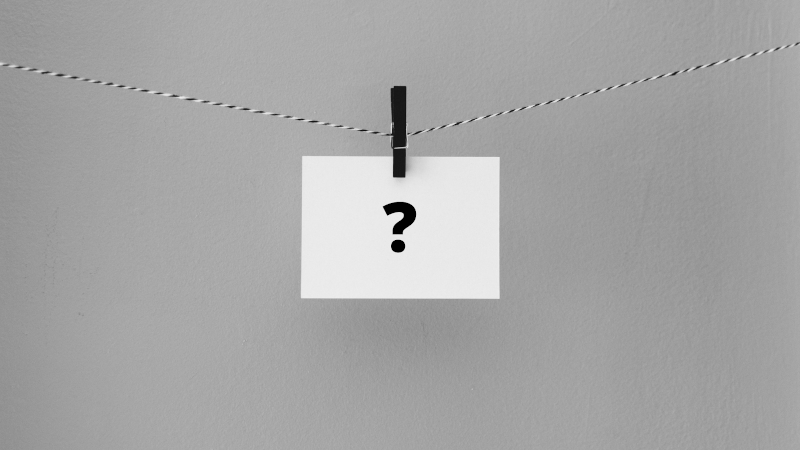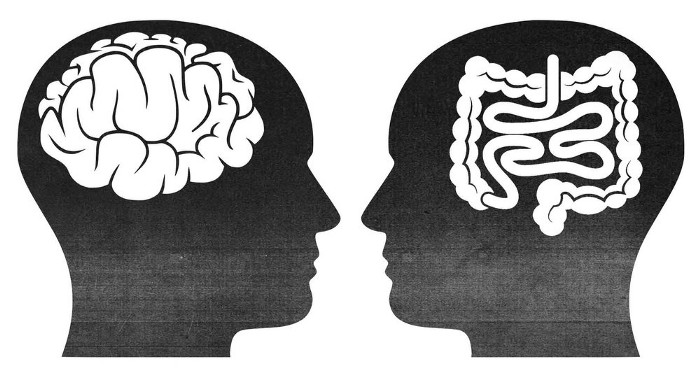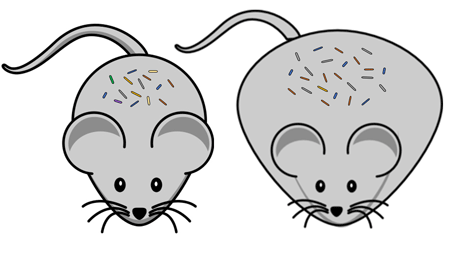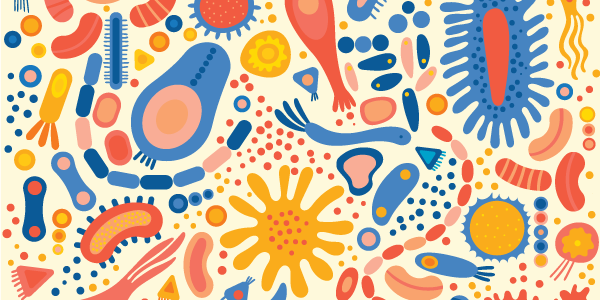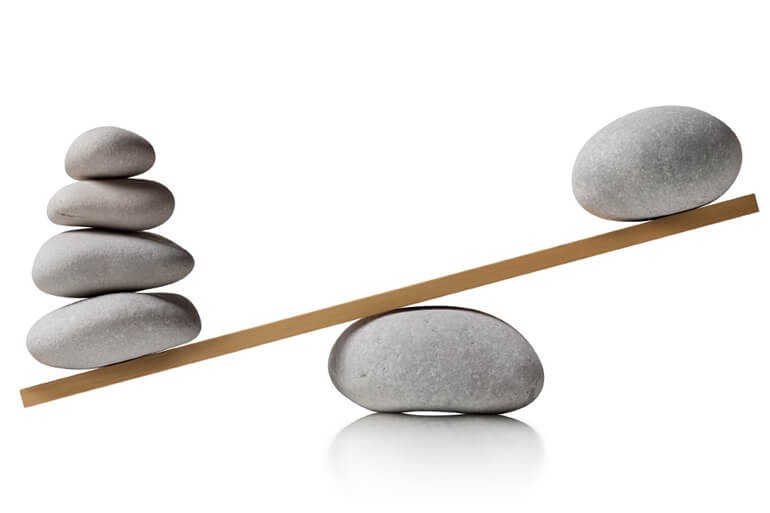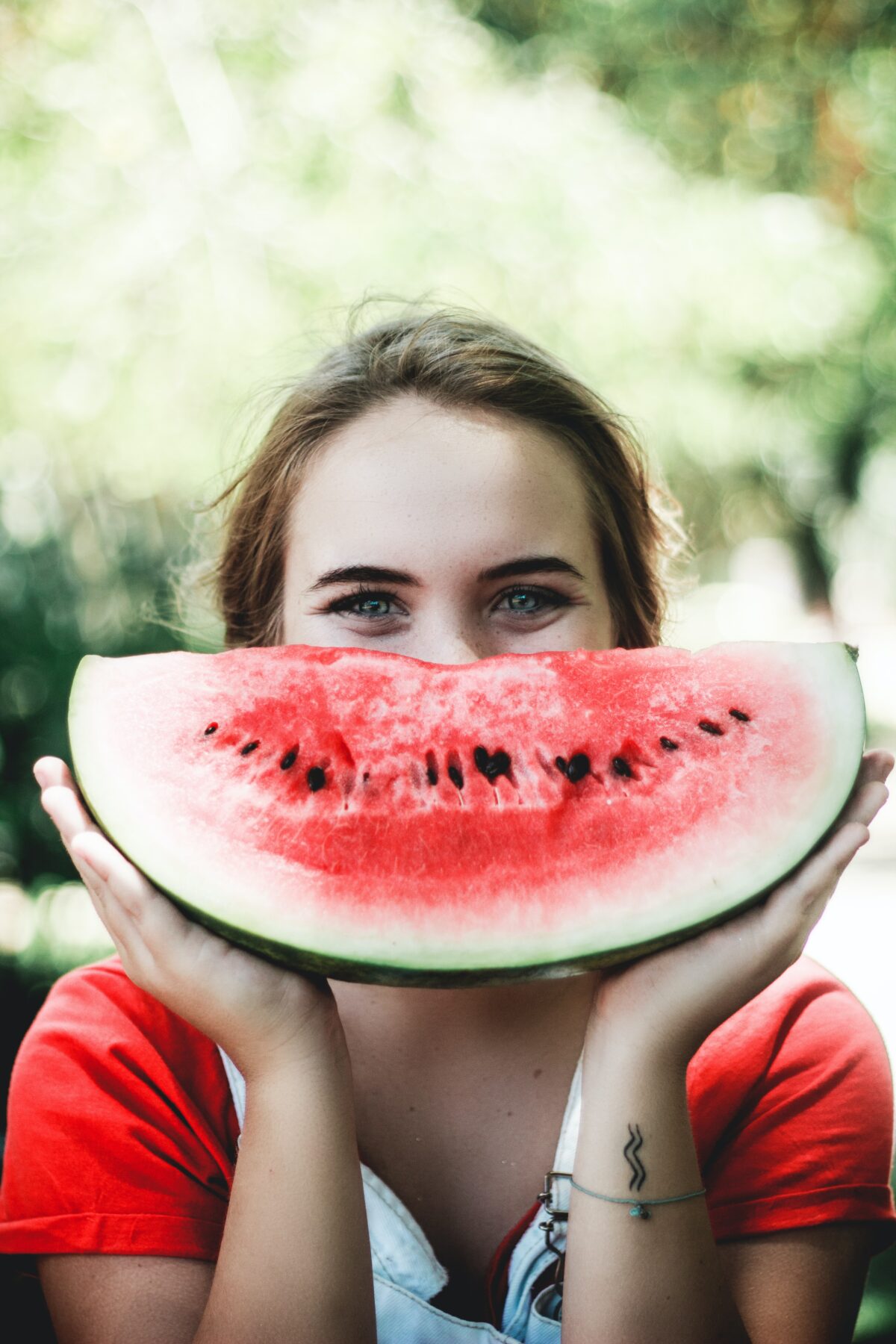Do you ever think about whether it’s even possible to have and maintain a balanced life?
There are times when I feel my energy is completely gone, and there’s nowhere to get it from.
And there are times when I have the gnawing feeling that I’m capable of so much more.
Who are these superhumans, who seem to consistently get it all right – who are organized, sleep enough, exercise regularly, have fulfilling relationships, eat their veggies, build a career, and still have time to have fun… Where do they get the time and energy from?
Back in 2015 I had no clear goals or solid systems. I was often carried away by what seemed the shiniest object at the moment.
One evening I was reading a book by Marshall Goldsmith “Triggers: Creating Behavior That Lasts”, and came across a tool called Daily Questions. The author claimed it has the potential to vastly improve all areas of my life, with a time commitment of just 5 minutes per day.
He offered proof from studies, and described how after ten days their team followed up and asked, “How’d you do? Did you improve?”
Of 79 studies with 2537 participants, the results were incredibly positive:
• 37% of participants reported improvement in all six areas.
• 65% improved on at least four items.
• 89% improved on at least one item.
• 11% didn’t change on any items.
“No way”, I thought. Still, I decided to try it out.
It turned out to be one of the best decisions I’ve ever made.
Questions became an obsession of mine, and over the years I’ve experimented with a lot of different methods and tools, as well as adapted and developed frameworks of my own.
Let me ask you this – What would happen if starting from today you wouldn’t need to constantly keep motivating yourself to make changes in your life? What if steady improvement became a natural part of your life?
You would have…
- More time and energy for what’s important to you
- Meaningful results without overwhelming yourself
- Enjoyment from the process of change, instead of a frustrating uphill struggle
But how to achieve this?
Most people are very sceptical that it’s possible to easily take up and sustain positive habits.
Is it possible to have balance in all the arenas of your life?
Are there repeatable and reliable methods you can follow that consistently produce clarity, results and fulfilment?
Yes, there are!
I am going to share three tools with you. These are best practices from my favorite thought leaders in the fields of personal growth, habit formation, productivity and self-awareness.
These tools have helped me enormously and I’ll show you how I’ve implemented them.
Click here to get the resource guide to 5 of my top favorite thought leaders on personal growth
By the end of this article you’ll have a great roadmap to solve the problems of life with as little energy and effort as possible.
You’ll learn:
- How to have and maintain a balanced life
- How to create positive lasting behavioural change
- How to improve the quality of your thinking by living into better and better questions
What’s the point?
It turns out most of us go through life unaware of how our environment shapes our behavior. Our surroundings are filled with triggers that shape our thoughts and actions, and push and pull us off the course. So, if you are not intentional about creating your environment, you will always be struggling.
Moreover, most often we don’t have a problem with motivation – instead, it’s the lack of clarity that keeps us stuck.
OK, so what’s the answer?
Questions are the answer!
The quality of your questions determines the quality of your thinking.
Life isn’t about finding answers to questions, it’s about living into better and better questions
Or as Rich Litvin says – “You don’t rise to the level of your answers. You fall to the level of your questions.”
There is no magic pill that solves your problems. It takes a journey of learning by doing.
Let’s get practical.
Tool #1 – Daily Questions
Here’s the process, step-by-step:
Step 1
- Choose any number of objectives you want to work on. It can be 3, or 13, or 33 – your choice.
For example I began with 7 questions, and over the years have had a list the size of 5-30 questions.
- Write down each objective in the format: “Did I give my best to …?”
This isn’t a list for impressing someone, and nobody will be judging your questions. Just make sure that the items are important in your life, and success on these items will help you become the person you want to be.
Step 2
- Each evening take a few minutes to answer the questions by giving yourself a score. I use a simple 1-10 scale, but use whatever scale feels right for you.
The idea is to measure effort, and to stop the endless obsession with results. You should put your attention on your current trajectory, not on your current results.
The mere act of tracking a behavior can spark the urge to change it.
Look for tiny margins of improvement! We tend to dismiss small changes, because they seem irrelevant. Instead we want to take massive action to achieve massive results, and end up doing nothing.
But the fact is that change doesn’t happen overnight. Success is the sum of tiny efforts repeated daily. And you have to take the responsibility for making these tiny steps. If you do, you will improve. If you don’t, you won’t.
To illustrate this – if you get 1 percent better each day for one year, you are going to end up thirty-seven times better.
Step 3
- Choose one person to consistently report the scores to. Either have him/her call you for 2 minutes, or send a message.
He/she can simply receive the results, or also take on the role of telling you when you’re falling off. Better yet, it can be someone who you can discuss personal growth topics at length.
Or you can be your own coach. I’ve never been reporting daily to anyone. Instead over the years I’ve talked to a lot of people and showed them that this is what I’m doing, and this has helped me be accountable to myself.
Take a look at one example from the book:
Here’s an example of my questions from 2016/2017:
What if I’m struggling with some of the questions and making no progress?
I know, the struggle can sometimes be very real.
Goldsmith sums it up well: “It is incredibly difficult for any of us to look in the mirror every day and face the reality that we didn’t even try to do what we claimed was most important in our lives.”
Let me introduce you to a world-class social scientist (PhD), named BJ Fogg. Last year he published a New York Times bestseller called “Tiny Habits”
When you’re struggling to get going with a new habit, he recommends that you ask yourself the Discovery Question: “What is making this behaviour hard to do?” The answer will involve at least one of five factors, which he calls the Ability Factors:
- Do you have enough time to do the behavior?
- Do you have enough money to do the behavior?
- Are you physically capable of doing the behavior?
- Does the behavior require a lot of creative or mental energy?
- Does the behavior fit into your current routine, or does it require you to make adjustments?
Having an answer to these questions, the next one to ask yourself is what Fogg calls the Breakthrough Question:
- How can I make this behavior easier to do?
There are only three possible answers to this:
- Make the behavior tiny
- Increase your skills
- Get tools and resources
Want to know more? A great summary of his book is here.
Let’s recap!
Summary of Tool #1 – Daily Questions
- Step 1 – Write down the amount of questions you like in the format of “Did I give my best to …..?”
- Step 2 – Each evening take a few minutes to answer the questions by giving yourself a score. Use whatever scale feels right for you.
- Step 3 – Choose one person to consistently report the scores to or commit to being your own coach.
But what if you’re still struggling and there’s a row of zeros in your table week after week? In that case I found I need to ask myself – is this really important to me? Several times I found I had overextended with the amount of questions and diluted the focus. And if only struggle came along with the question, I rephrased it or deleted it altogether.
Tool #2 – Habit Tracker
Next, an integrated habit tracker that I’m currently using. The best way to measure your progress is with a habit tracker. Let me break it down for you.
Step 1
- Choose a few habits that you want to track, and set success criteria for yourself. Tiny in the beginning, remember? This time it isn’t about the effort anymore, but you will simply tick a box each evening if you’ve met the criteria you set for yourself. The questions here are implicit, because I know what my criteria are. But of course you can write them down so they’re always somewhere where you can see them.
For example:
“Meditate” means doing my meditation practice for at least one 21-minute session earns a checkmark, but the vast majority of days I am doing the full intended amount, which is 21 minutes in the morning plus 21 minutes in the evening. Simply because the peace of mind and clarity I get from it is too valuable to let go of.
Implicit question – did I meditate at least 21 minutes today?
“Breathing” – a few different breathwork exercises for 5 minutes.
“Morning workout” looks very glamorous, and for years it meant in the Daily Questions format that I do 8-25 minutes of high-intensity workout, but for the last half a year it has simply meant 5 minutes of different stretching exercises
Step 2
- Set up a “don’t break the chain” tracker – in short d-b-t-c. This idea is taken from the “Atomic Habits” book by James Clear. The point being, it’s psychologically much harder to drop off a habit this way.
Keeping a simple daily log gives you much more self-awareness. If you’re simply estimating how well you’re doing, you will generally overestimate the amount of work you’ve been putting in.
Think of it this way – if you miss a day, it’s an accident. If you miss two days, it’s already the start of a new habit.
- Add any extra parameters that you think would be fun to measure. I’m motivated to strive towards increasing the Longest Streak, and the % Completed Days tells me at a glance what’s the reality of how well I’m doing.
Example:
Step 3
- At the end of each day take 1 minute to tick the boxes.
Clear recommends recording each measurement immediately after the habit occurs. The completion of the behavior is the cue to write it down. I’ve found this too cumbersome and a waste of time – it doesn’t help me keep the habit significantly better.
Don’t forget to have a mini celebration each time you complete a new behaviour. It should be something that creates a positive emotion. A little mental pat-on-the-back, or saying “I did well!” out loud, for example. This helps you to wire the new behavior into your brain.
Step 4
- At the end of the week, take 5 minutes to update the streaks and file away the week. I do it as a part of the Weekly Review process, every Sunday evening.
Because we tend to remember the ending of any experience more than any other phase, I find it rewarding to wrap up the week with a small review and a mini moment of pride and satisfaction when taking the action of filing the week to “archive”, even though I know full well I won’t ever click it open again.
FYI the program I’ve set this up in is called Roam Research, which I wholeheartedly believe to be the next best thing since sliced bread, for Personal Knowledge Management. All you lifelong learners, techie nerds and systems optimizers, rejoice!
Summary of Tool #2 – Habit Tracker
- Step 1 – Choose a few (tiny) habits that you want to track, and set success criteria for Step 2 – Set up a “don’t break the chain” tracker, and any other extra parameters that you think would be fun to measure
- Step 3 – Tick the boxes at the end of each day
- Step 4 – At the end of the week, take a few minutes to update the streaks and file away the week.
Next up – my favorite tool for having and maintaining a balanced life.
Tool #3 – Daily Questions Journal
Journaling is an age-old fantastic tool for self-awareness, and I can say with confidence that it’s making a huge comeback in the world. People have a knack for integrating the old with the new.
New tools for thinking and sensemaking are being developed each day. And writing is a form of thinking, not simply a way to put your thoughts down. Very often you have no idea what you really want to say or what you mean, before you’ve actually written it down.
My journey of journaling reflects very well the mantra of “start small”. My first journal was literally a tiny notebook where I scribbled down random thoughts that I found interesting at the time.
It was a total mess:
There were no dates, no regular time to fill it, nor any questions to answer. No system, no nothing. But over time the journal filled up, and I got a new and bigger one. And then a bigger one.
Then I really dug in and took a deep dive into Ira Progoff “Intensive Journal Method”, which turned out to be an awesome way to journal, but considering what a huge effort it was to follow the whole process I can’t imagine it ever gaining a large base of followers.
Next came guided journaling exercises in the U.Academy, and finally in the summer of 2020 when discovering the Personal Knowledge Management concept through Tiago Forte, I started to use Roam Research and integrated my journaling practice into the program.
Now it looks like this:
I won’t get into the nitty gritty of the awesome things that Roam Research allows to do (e.g. my favorite Evergreen notes), and instead explain the gist of the journal:
- Twice a day journaling for 15 minutes – once in the morning, once in the evening.
- A Pomodoro Timer to help keep track of time.
- The questions have evolved over time to include not only the intelligence of my mind, but also speak to my heart and gut, and reflect my values as well as they possibly can.
- Some days I have great answers and even better new questions, and some days I’m at a loss for words. Some questions are for a brain dump, some for evoking emotions, and some for confidence and some for challenging me.
A few suggestions for the journey:
- Experiment!
There is no one-size-fits-all solution. Start from anywhere, with tiny objectives, tiny habits, and move on from there. There’s no rush. Get rid of the absolutely useless mentality of all-or-nothing and take action! Start by journaling for two minutes, and answering one question in the process.
As the marketing legend Seth Godin says:”The easiest thing is to react. The second easiest thing is to respond. But the hardest thing is to initiate.”
- The process matters much more than the goals
There’s huge value in building a system around anything you do in life. We are living in the era of systems thinking and systems awareness.
In the words of James Clear – “You don’t rise to the level of your goals. You fall to the level of your systems”
——————————————————————————————–
Bonus: I can’t help myself – the balance of this article is getting way too skewed towards the practical, so I can’t resist the urge to share an excerpt from a philosophical comic strip about questions and answers.
Check out the comic strip in full
——————————————————————————————–
Conclusion
Learning how to ask questions is life-changing.
Just be sure you follow these four steps to guarantee a steady improvement towards having and maintaining a balanced life.
Step 1: Set the intention – pick questions. Remember: start tiny!
Step 2: Track your behavior daily by using any of your favorite tools outlined here.
Step 3: Set some time aside to regularly take a step back and reflect on your process, questions and results.
Step 4: Make small adjustments. Repeat steps 1-3.
Phew. That’s it guys. Congratulations for making it to the end!
If you enjoyed this and want to keep in touch, click the link below to subscribe to our free newsletter. It’s where we share practical tools and key insights into what makes a healthy and balanced life, and how to improve gut health and create sustainable habits.
Subscribe to our free newsletter here
Oh, and one more thing. I’m always absolutely delighted to hear your feedback, comments, and coolest a-ha moments.
Write to me at priit@elsavie.com
-Priit
